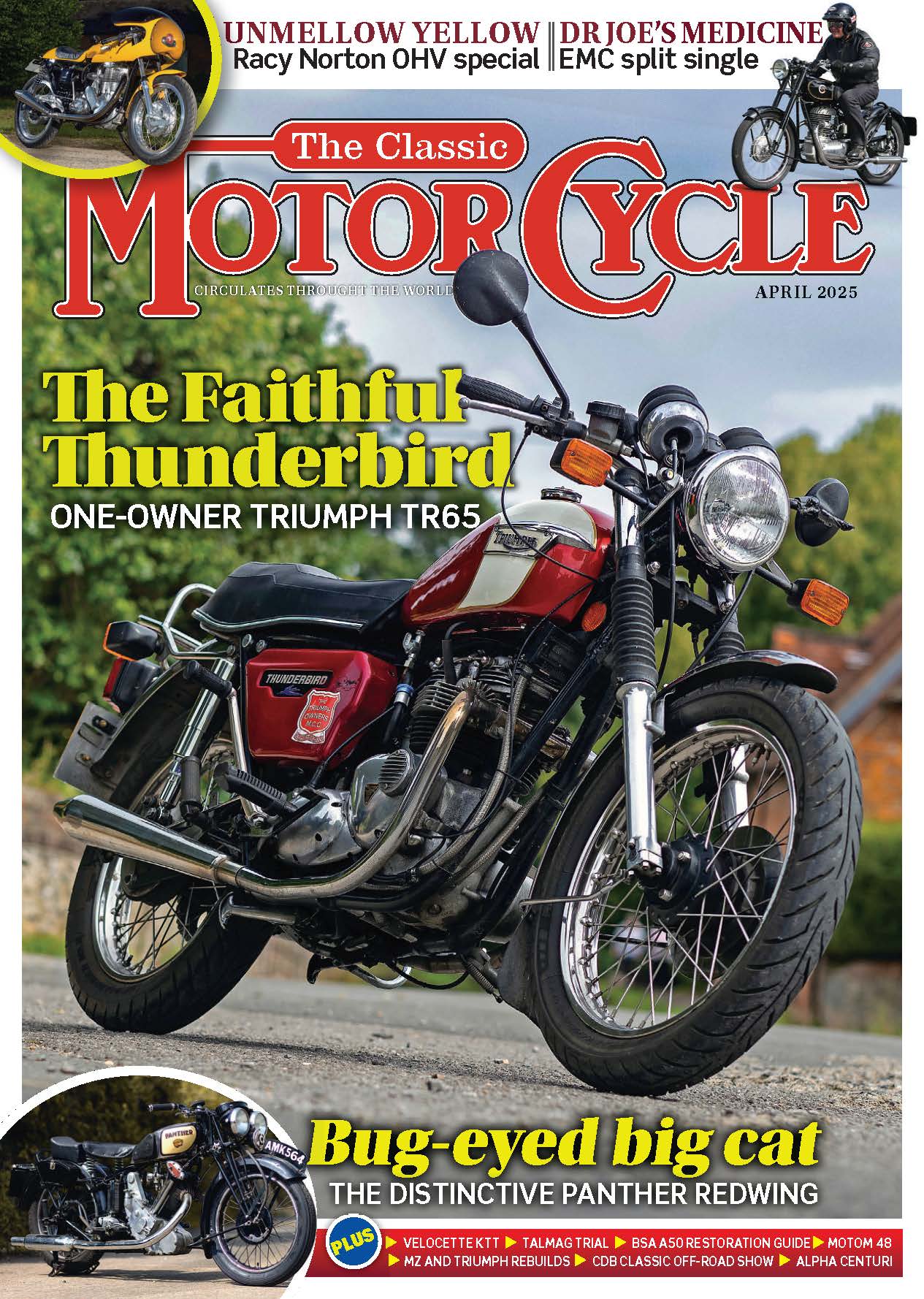Well-known on the classic scene, genial Cumbrian Bill Bewley restored this fabulous Series A Comet just in time for the 2009 Stafford April show, where it was among the prizes, picking up the award for Best Pre-WWII. Since then, it’s graced the Carole Nash stand at the 2009 International Motorcycle show, while it was on the main Mortons stand at Stafford April 2010. However, it was a bit over(Black)shadowed at Stafford 2010 – Bill’s equally well restored version of Vincent’s 125mph roadster won top prize there, chosen as best in show.
The Series A Comet shouldn’t be overlooked though. Arguably the ‘A’ single was the most important motorcycle in Vincent history, and tales of its conception are legendary. So the story goes, disgusted by the performance of ‘special’ proprietary JAP engines fitted in his Isle of Man TT racers during the 1934 event, Phil Vincent vowed to no longer depend on bought-in engines. In just four months, the in-house designed prototype single cylinder engine was ready for display at the Olympia motorcycle show, whereupon Phil Vincent (PCV) confidently predicted a top speed of 80mph for the cooking Meteor, 90mph for the sportier Comet and a ton for the racing TT Rep… despite the fact no engine had yet been run.
However, PCV’s confidence was proved well-placed – and there was no real surprise, as the engine was the work of well-respected Australian Phil Irving. The ‘high cam’ engine – the camshaft is set as high as possible in the timing chest, allowing short pushrods to be used; a similar set-up to Velocette’s M series – proved itself a fast and reliable unit.
Enjoy more Classic MotorCycle reading in the monthly magazine.
Click here to subscribe & save.
The Series A single of course was doubled up to create the first Vincent (HRD) V-twin, while the Post-WWII singles (and twins) were extensively redesigned. However, without the Series A singles, then there would surely have been no Rapides, no Black Shadows, no Black Lightnings, no Gunga Din, no Rollie Free record attempt, no Nero… The importance of the Series A single in the Vincent pantheon should not be underestimated; now, the model has become desirable and with its historical significance and 1930s good looks, it’s hardly surprising.
Advert
 Enjoy more The Classic MotorCycle reading in the monthly magazine. Click here to subscribe.
Enjoy more The Classic MotorCycle reading in the monthly magazine. Click here to subscribe.



